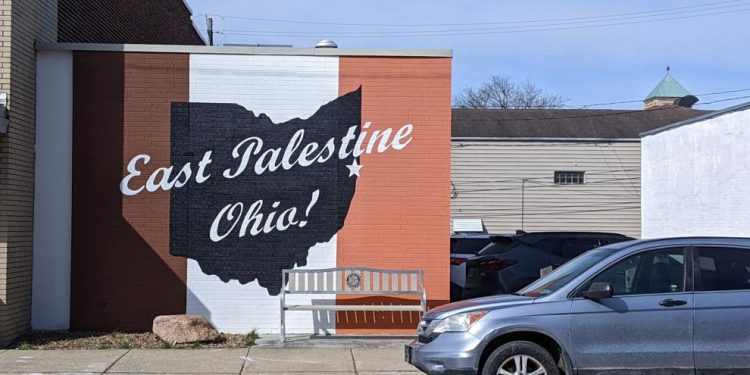By Anthony Hennen | The Center Square
(The Center Square) — As the one-year anniversary approaches of the train derailment in East Palestine, Ohio, President Joe Biden says he will soon visit the area to meet with locals and assess the recovery efforts.
The White House has not confirmed when, but said that a trip to the site near the Ohio-Pennsylvania border would be made in February. The derailment of the Norfolk Southern train, just east of the town center, led to a conflagration when officials decided to burn off vinyl chloride, exposing residents and nature to chemical smoke and fumes.
Though Secretary of Transportation Pete Buttigieg and EPA Administration Michael Regan made trips to East Palestine since the accident, Biden hasn’t follow suit. Last March, he vowed to go “at some point.”
“For many, it’s been a year of fear, a year of uncertainty, and a year of change,” Regan said during a Wednesday press call. “We recognize that times have been very challenging.”
The EPA head argued that Biden had mobilized a “whole-of-government” response to hold Norfolk Southern accountable for the disaster, clean up the area and restore the community in East Palestine.
He also made a bold promise.
“The U.S. EPA will continue to stand shoulder-to-shoulder with the East Palestine community until we are certain that every bit of hazardous contamination is gone,” Regan said. “We will not leave until this community is restored and made whole again.”
He hit some highlights: the removal of more than 176,000 tons of contaminated soil from the area, shipped out 43 million gallons of wastewater, and took 45,000 air samples. More than 80 homes and structures have also been cleaned to address potential dust emissions from the derailment, Regan said.
Transportation Secretary Buttigieg argued the derailment wasn’t just a local issue, but a terrible example of what happens when rail safety isn’t prioritized.
“The derailment of that Norfolk Southern train in East Palestine was not only a crisis for the community, but also a wake-up call for the country, making it clear that Congress, industry, and our department could and needed to do more to improve safety,” he said.
He urged Congress to pass the Bipartisan Railroad Safety Act at a time when derailments and preventable incidents are happening “at an unacceptable rate.”
The way state and federal officials have handled the derailment, however, has left locals extremely skeptical — if not hostile — over the last year to grand promises and commitments.
Less than a month after the disaster, residents castigated the “pathetic” official response. They said they were left in the dark by officials and a lack of information and abandoned.
By the end of March, those feelings hadn’t changed much. Though residents gave the benefit of the doubt to the EPA — and felt nothing but utter distrust of Norfolk Southern — they demanded more testing of soil, air and water.
A more proactive approach to rebuilding trust, like contacting residents instead of sending out press releases telling them to call, or giving more credence to the testimony of farmers who saw smoke plumes cover their property, may have helped assuage local cynicism.
When summer arrived, that cynicism remained strong. Dissatisfied locals were still demanding more transparency and testing from government officials rather than reassurances. One academic researcher argued that the EPA had failed to protect residents from the effects of the disaster because the agency didn’t do more testing inside homes that were contaminated.
For the future, the White House emphasized current discussions with residents about what services they want to aid the area’s recovery.
Senior administration officials, though, were mum on any details.
“Those discussions will be part of a long-term monitoring plan that Norfolk Southern will be asked to develop (and) that will be reviewed by all the local, state, and federal partners before it’s approved,” an official said.




